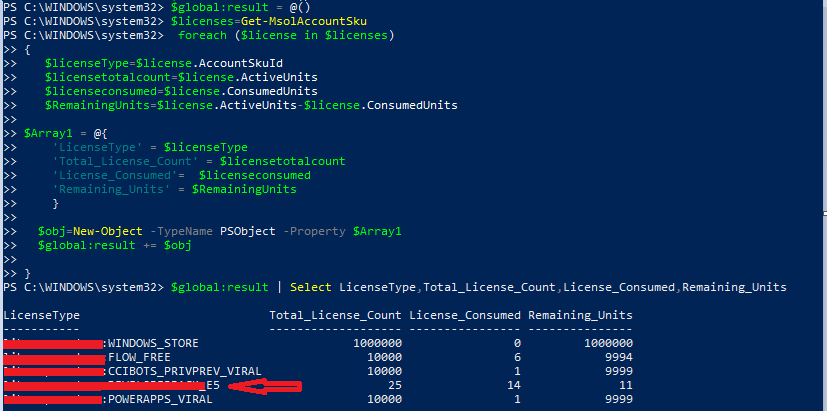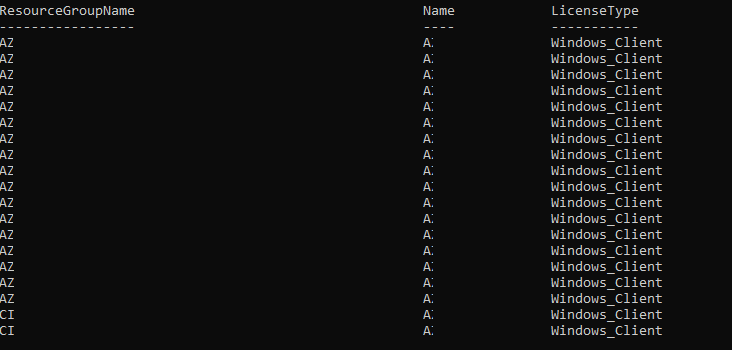New AVD External users licensing and How quickly you can find your Azure Virtual Desktop License Count
As you are aware that Microsoft has recently rebranded its Windows Virtual Desktop (WVD) service as “Azure Virtual Desktop.” At the same time, the company has announced the new price for its external user access. Let’s quickly understand how the new licensing will be.
Azure Virtual Desktop pricing includes two parts.
1. User access rights:
License entitlement: There is no additional cost if you have an eligible Windows, Microsoft 365, or Microsoft Remote Desktop Services (RDS) Client Access License (CAL).
Per-user access pricing: Here Microsoft has introduced a new option for monthly per user pricing for access to Azure Virtual Desktop for external users only.
For Remote Desktop
| Type | Description | Eligibility/ requirement |
| License entitlement | BYOL for Windows 10/ Windows 7 (M365 Licenses) | Per-user license (Microsoft 365 E3/E5/ A3/A5/F3/Business Premium) |
| License entitlement | BYOL for Windows 10/ Windows 7 (Windows Licenses) | Per-user license Windows 10 Enterprise E3/E5/A3/A5 |
| License entitlement | BYOL for Windows Server | No. of (RDS) Client Access License (CAL) |
| Per user access pricing | Access rights for the external users who don’t have any of the above licenses | The monthly price for external users only. The monthly price has been announced as $10 per user per month (Apps + Desktops) (W.e.f January 1, 2022) – Now it’s free till Dec. 31st |
For Remote App
| Type | Description | Eligibility/ requirement |
| License entitlement | BYOL for Windows 10/ Windows 7 (M365 Licenses) | Per-user license (Microsoft 365 E3/E5/ A3/A5/F3/Business Premium) |
| License entitlement | BYOL for Windows 10/ Windows 7 (Windows Licenses) | Per-user license Windows 10 Enterprise E3/E5/A3/A5 |
| License entitlement | BYOL for Windows Server | No. of (RDS) Client Access License (CAL) |
| Per-user access pricing | Access rights for the external users who don’t have any of the above licenses | The monthly price for external users only. The monthly price has been announced as $5.5 per user per month (Apps Only) (W.e.f January 1, 2022) – Now it’s free till Dec. 31st |
2. Azure infrastructure costs
In addition to user access, you will need an Azure account to deploy and manage your virtualization environment. These are the Azure components generally required to host an Azure Virtual Desktop deployment.
- Virtual machines
- Storage
- Operating system (OS) storage
- Data disk (personal desktop only)
- User profile storage
- Networking
Today I will show you how quickly you can calculate the license count of the available licenses in the M365, first, you can log in to M365 portal from PowerShell, you need to import the MSOnline module.
1) Import the MSOnline module
Import-Module MSOnline
2) Connect to M365 service
Connect-MsolService

3) Run the below script, to get the available license, totally consumed and remaining licenses count.

Here is the script. In the above script, you can see that in my whyazure lab I have 25 E5 licenses and I have already consumed 14 of them.
Here is the script.
Clear-Host
$global:result = @()
$licenses=Get-MsolAccountSku
foreach ($license in $licenses)
{
$licenseType=$license.AccountSkuId
$licensetotalcount=$license.ActiveUnits
$licenseconsumed=$license.ConsumedUnits
$RemainingUnits=$license.ActiveUnits-$license.ConsumedUnits
$Array1 = @{
'LicenseType' = $licenseType
'Total_License_Count' = $licensetotalcount
'License_Consumed'= $licenseconsumed
'Remaining_Units' = $RemainingUnits
}
$obj=New-Object -TypeName PSObject -Property $Array1
$global:result += $obj
}
$global:result | Select LicenseType,Total_License_Count,License_Consumed,Remaining_Units | Export-Csv -NoTypeInformation -Path "D:\O365\License\LicenseCount.csv"With the Export-CSV function added in the script, you can also save the data in a csv file for later use.
Now you can also verify whether the AVD license is enabled for the AVD desktops you are using by the below command.
For this
1) Install the Az PowerShell Modules

2) Connect to Azure

3) Get all the Azure VM’s stored in a variable.

4) Find VM’s in which AVD licenses are assigned.


5) You can find the count by running these two commands
$licensedforavd = $vms | Where-Object {$_.LicenseType -like "Windows_Client"} | Select-Object ResourceGroupName, Name, LicenseType
$licensedforavd.Count

As you can see the Windows_Client license is enabled for all the VDI’s which are used in my Lab. The count is 19 right now which is 5 more than the actual 14 licenses which I have consumed for the test users of M365, so these 5 licenses will be either part of BYOL for Windows 10/ Windows 7 or can be counted as the external license.
I hope you have got some idea of AVD licensing, thanks for reading this post, you have a great day ahead.


